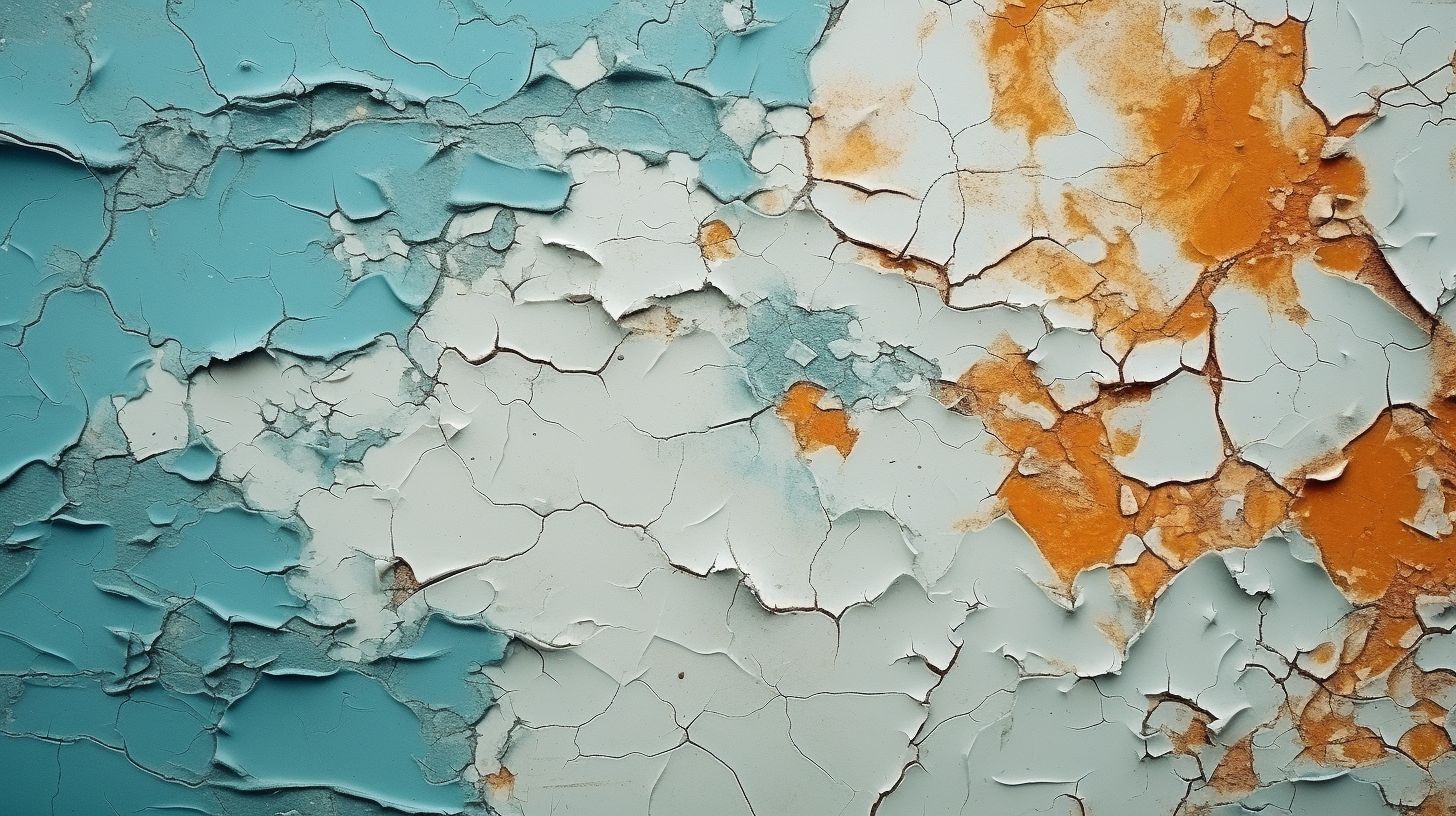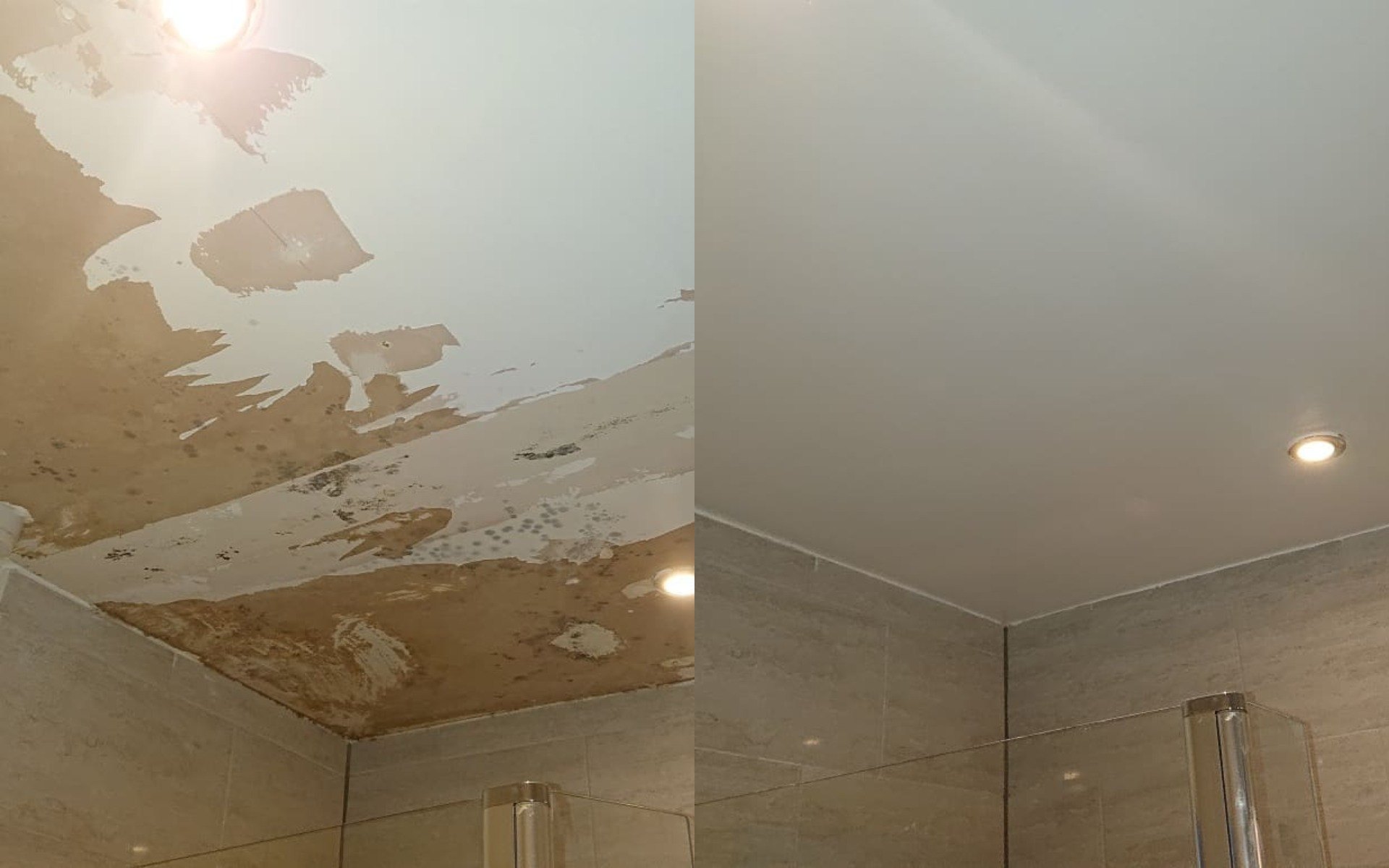Common Causes of Bathroom Paint Peeling

A peeling bathroom paint job can be an eyesore, but it’s also a sign of a bigger problem. The bathroom is a unique environment, with high levels of humidity and moisture that can damage paint and make it peel. Fortunately, understanding the causes of peeling paint can help you prevent it from happening in the future.
The Role of Moisture in Bathroom Paint Peeling
Moisture is the main culprit behind bathroom paint peeling. When water vapor condenses on painted surfaces, it can seep into the paint film and cause it to detach from the wall. This is especially true in bathrooms, where moisture levels are consistently high due to showering, bathing, and even everyday activities like brushing your teeth.
Types of Paint Susceptible to Peeling in Bathrooms
Not all paints are created equal, and some are more susceptible to peeling in bathrooms than others. For example, oil-based paints, which are often used in kitchens and bathrooms for their durability, can be prone to peeling in humid environments. This is because oil-based paints form a hard, glossy finish that can trap moisture beneath the surface.
Latex paints, on the other hand, are more breathable and less likely to trap moisture. However, latex paints can still peel in bathrooms if they are not properly applied or if the bathroom is not adequately ventilated.
The Impact of Poor Ventilation on Bathroom Paint
Poor ventilation can exacerbate moisture problems in bathrooms. When moisture is trapped inside the bathroom, it can condense on surfaces, leading to paint peeling. A well-ventilated bathroom, however, allows moisture to escape, reducing the risk of condensation and paint peeling.
Preventing Moisture Buildup in Bathrooms
To prevent moisture buildup and paint peeling in bathrooms, you can take several steps:
- Use a fan. A bathroom fan is essential for removing moisture from the air. Turn the fan on during and after showering or bathing to help clear the air of excess moisture.
- Open the window. If you have a window in your bathroom, open it for a few minutes after showering or bathing to allow fresh air to circulate. This can help to reduce humidity levels.
- Dry the bathroom after showering or bathing. Use a towel to dry the walls and floor after showering or bathing. This will help to prevent water droplets from accumulating and causing paint peeling.
Preparing the Bathroom Surface for Painting: Bathroom Paint Keeps Peeling

A well-prepared bathroom surface is crucial for a long-lasting paint job. Neglecting this step can lead to peeling paint, which defeats the purpose of repainting in the first place. A thorough cleaning and prepping process ensures that the paint adheres properly to the surface, preventing peeling and extending the life of your paint job.
Cleaning and Prepping the Bathroom Surface
Before applying any paint, it’s essential to thoroughly clean the bathroom surface. This involves removing any dirt, grime, soap scum, mildew, and old paint layers that might hinder the paint’s adhesion.
- Remove Loose Paint: Use a scraper or putty knife to remove any loose or flaking paint. This ensures a smooth surface for the new paint to adhere to.
- Clean with a Degreaser: A degreaser effectively removes soap scum, oil, and grease from the bathroom surface. Apply the degreaser according to the product instructions and allow it to dry completely before proceeding.
- Remove Mold and Mildew: Mold and mildew can weaken the paint’s adhesion and create an unsightly appearance. Use a mold and mildew remover, following the instructions on the product label. Wear gloves and a mask for protection during this step.
- Rinse Thoroughly: After cleaning, rinse the bathroom surface thoroughly with clean water to remove any residue from the cleaning agents. Allow the surface to dry completely before moving on to the next step.
Sanding and Priming the Bathroom Walls
Sanding and priming are essential steps for achieving a smooth and durable paint finish. Sanding helps to create a rough surface for the primer to adhere to, while priming provides a barrier between the existing surface and the new paint.
- Sand the Surface: Use a fine-grit sandpaper (120-grit) to smooth out any rough spots or imperfections on the bathroom walls. This will help to create a uniform surface for the primer and paint to adhere to. Sanding also helps to remove any remaining traces of old paint or other debris.
- Apply Primer: After sanding, apply a primer specifically designed for bathroom surfaces. Primers are formulated to seal the surface, prevent moisture from penetrating, and improve the paint’s adhesion. Apply the primer in thin, even coats, allowing each coat to dry completely before applying the next.
Choosing the Right Paint for Bathrooms

Picking the right paint for your bathroom is crucial to ensuring a long-lasting, beautiful finish that can withstand the unique challenges of this high-moisture environment. Understanding the different types of paint and their characteristics is essential for making the best choice for your bathroom.
Comparing Bathroom Paint Types
The most common types of bathroom paint include acrylic latex, epoxy, and oil-based paints. Each type has its own advantages and disadvantages, making it important to weigh your needs and preferences carefully.
Pros and Cons of Bathroom Paint Types
| Paint Type | Durability | Moisture Resistance | Ease of Application |
|---|---|---|---|
| Acrylic Latex | Good | Good | Easy |
| Epoxy | Excellent | Excellent | Moderate |
| Oil-Based | Good | Good | Moderate |
Factors to Consider When Choosing Bathroom Paint, Bathroom paint keeps peeling
Choosing the right bathroom paint involves considering several factors beyond just the type of paint.
- Color: Bathroom paint color should complement the overall décor and create the desired ambiance. Light colors can make a small bathroom feel larger, while darker colors can create a more intimate and luxurious atmosphere.
- Sheen: The sheen of the paint refers to its level of glossiness. Matte finishes are less reflective and hide imperfections well, but they are more prone to stains. Satin and semi-gloss finishes are more durable and easier to clean, making them ideal for high-traffic areas like bathrooms.
- VOC Content: VOCs (Volatile Organic Compounds) are chemicals released from paint that can contribute to indoor air pollution. Choosing low-VOC or zero-VOC paints is important for improving indoor air quality, especially in a bathroom where moisture can trap VOCs.
Applying Paint Properly in a Bathroom
Proper paint application is crucial for achieving a smooth, even finish and ensuring the paint adheres well to the bathroom surface.
- Prepare the Surface: Thoroughly clean the bathroom surface with a mild detergent and allow it to dry completely. Fill any cracks or holes with spackle and sand the surface smooth. Apply a primer to create a smooth, even base for the paint and improve adhesion.
- Use the Right Tools: Use a high-quality paintbrush or roller for applying paint. For small areas, a brush is preferred, while a roller is better for large surfaces. A paint tray liner will help keep the paint clean and prevent spills.
- Apply Thin Coats: Apply thin, even coats of paint, allowing each coat to dry completely before applying the next. Avoid applying thick coats, as this can lead to cracking and peeling.
- Clean Up: Clean brushes and rollers immediately after use with the appropriate solvent. Remove any paint spills or splatters immediately to prevent staining.
